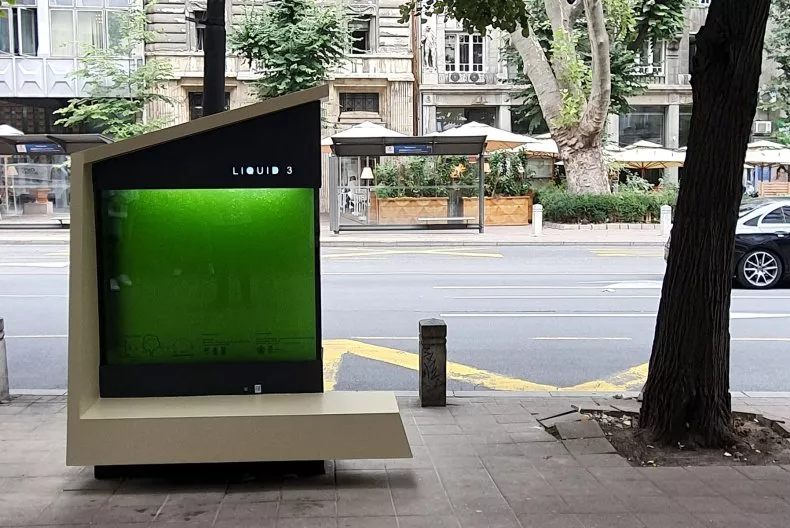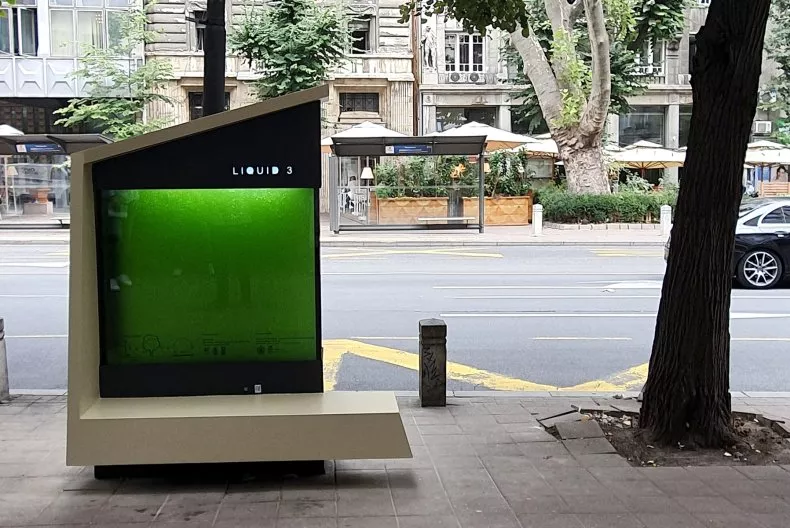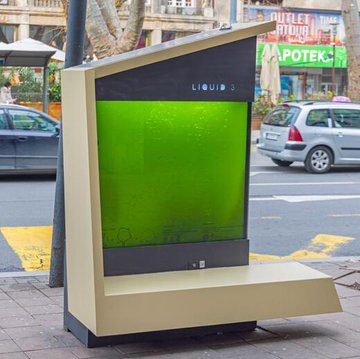Air pollution is a significant environmental problem that affects the health and well-being of people around the world. Industrialization, transportation, and the burning of fossil fuels have led to a significant increase in air pollution. Trees have been known to be an essential solution to this problem. However, researchers have now discovered a new approach to this solution by using “liquid trees.” In this article, we will explore what liquid trees are, how they work, and how they can save the world from air pollution.

The problem of air pollution has become a major concern for governments and citizens around the world. Air pollution causes a range of health problems, including respiratory problems, heart disease, and cancer. The burning of fossil fuels, industrial processes, and transportation are some of the major contributors to air pollution. Trees have long been known to help in reducing air pollution. However, researchers have now discovered a new technology that involves the use of “liquid trees” to tackle this problem.
The use of liquid trees as a potential solution to air pollution problems in large cities has been gaining traction, leading to a lively online discussion. Social media platforms such as Twitter have seen a surge of posts containing images and videos of the algae tanks.
One particular post by @yupthtexists has gained widespread attention, accumulating 18,000 likes and millions of views.
The post contained the caption, “Scientists create Liquid Trees; a tank full of water and micro-algae that could be an alternative to trees in urban areas.”
Scientists create Liquid Trees; a tank full of water and micro-algae that could be an alternative to trees in urban areas. pic.twitter.com/PMFuqbfJK8
— Yup That Exists (@yupthtexists) March 29, 2023
What Are Liquid Trees?

Liquid trees are a new technology that involves the use of a liquid solution that mimics the biological functions of trees. The solution consists of a mixture of water, nutrients, and nanoparticles that absorb pollutants from the air. The liquid solution is then circulated through a network of pipes, acting like a tree’s root system. The solution absorbs pollutants such as nitrogen oxide, carbon monoxide, and sulfur dioxide.
How Do Liquid Trees Work?

Liquid trees work by mimicking the biological functions of trees. Trees absorb pollutants from the air through their leaves and roots. The absorbed pollutants are then converted into nutrients that are used by the tree. Liquid trees work in a similar way, but instead of using a tree’s leaves and roots, a liquid solution is used. The solution absorbs pollutants from the air and converts them into nutrients that can be used by plants.
Benefits of Liquid Trees
The use of liquid trees has several benefits. Firstly, they are much more efficient than traditional trees at absorbing pollutants from the air. Secondly, they can be installed in areas where traditional trees cannot grow, such as urban areas with high levels of pollution. Finally, liquid trees can be installed in a much smaller area than traditional trees, making them ideal for cities and other urban areas where space is at a premium.
How Can Liquid Trees Save the World from Air Pollution?
The use of liquid trees can help to reduce air pollution significantly. By installing liquid trees in areas with high levels of pollution, the pollutants can be absorbed before they have a chance to spread further. Liquid trees can also be used in conjunction with traditional trees to create a more comprehensive solution to air pollution.
Hypergiant Industries, a biotechnology company, reports that a particular type of algae known as Chlorella vulgaris can be up to 400 times more efficient at capturing CO2 than trees.
The notion that these tanks could serve as a substitute for trees has not been well-received by Twitter users.
“Before Atlanta gets any ideas, liquid trees don’t reduce erosion, enrich soil, prevent flooding, and improve the quality of groundwater,” tweeted Atlanta Community Press Collective, @atlanta_press.
“”Liquid trees” THERES ALREADY FREE AIR!!!! FROM REAL TREES!!!!” tweeted @nightmeir_1.
Liquid trees are an experiment to work around lack of space in big cities: they contain 600 liter of water and work by using microalgae to bind CO₂ and produce pure oxygen through photosynthesis
— Massimo (@Rainmaker1973) March 26, 2023
[read more: https://t.co/1fvwSco3ND]
[📹 nanaibrahim2023]pic.twitter.com/a0UGJYPOOa
The Future of Liquid Trees
The use of liquid trees is a relatively new technology, but it has already shown great promise in tackling air pollution. As more research is conducted, it is likely that liquid trees will become even more efficient and effective. It is also possible that liquid trees could be used to tackle other environmental problems, such as soil pollution.
Liquid trees are an experiment to work around lack of space in big cities: they contain 600 liter of water and work by using microalgae to bind CO₂ and produce pure oxygen through photosynthesis
— Massimo (@Rainmaker1973) March 26, 2023
[read more: https://t.co/1fvwSco3ND]
[📹 nanaibrahim2023]pic.twitter.com/a0UGJYPOOa
Conclusion
Air pollution is a significant problem that affects the health and well-being of people around the world. Trees have long been known to help in reducing air pollution. However, researchers have now discovered a new technology that involves the use of “liquid trees” to tackle this problem. Liquid trees are a more efficient and effective solution to air pollution, and they can be installed in areas where traditional trees cannot grow. As more research is conducted, it is likely that liquid trees will become an even more essential tool in the fight against air pollution.
FAQs
How long do liquid trees last?
Liquid trees can last for several years, depending on the quality of the liquid solution used and the environment in which they are installed.
How much do liquid trees cost?
The cost of liquid trees can vary depending on the size of the installation, the quality of the liquid solution used, and the location of the installation. However, in the long run, liquid trees can be a cost-effective solution to air pollution, as they require less maintenance than traditional trees.
Are liquid trees safe for the environment?
Yes, liquid trees are safe for the environment. The liquid solution used in liquid trees is non-toxic and biodegradable, and the process of absorbing pollutants from the air is entirely natural.
Can liquid trees be used in rural areas?
Yes, liquid trees can be used in rural areas to tackle air pollution. However, traditional trees may be a more practical solution in areas where space is not an issue.
How can I get liquid trees installed in my city?
To get liquid trees installed in your city, you can reach out to companies that specialize in the installation of green infrastructure. You can also contact your local government or environmental organizations to explore the possibility of installing liquid trees in your area.